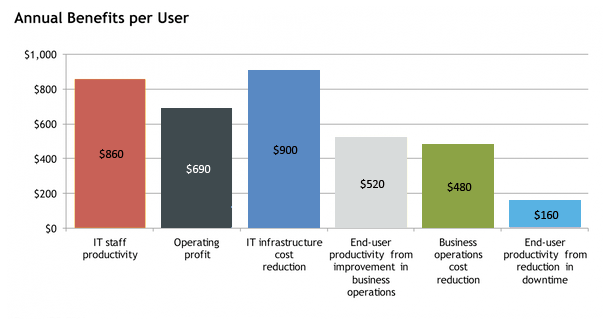The Real Cost of IT Complexity
IT complexity is one of the enterprise’s biggest challenges, affecting every facet of the organization--from employees to customers.
June 4, 2015

By Infrascale Guest Blog 1
IT complexity is one of the enterprise’s biggest challenges, affecting every facet of the organization–from employees to customers.
But how do you define IT complexity, and what is the impact? Lucky for us, Oracle commissioned IDC to look at organizations that simplified their IT environment and to develop an index to quantify IT complexity’s impact.
According to IDC, IT complexity can be defined “as the state of an IT Infrastructure that leads to wasted effort, time, and expense.” Conditions contributing to this include:
Heterogeneous environments
Using outdated technologies
Server, application or data sprawl
Lack of sufficient management tools and automation
Silo’d IT
On the flip side, complexity isn’t “always a symptom of things gone wrong”–it’s just the reality of today’s competitive business landscape. In order to stay competitive, companies have to build sophisticated solutions for demanding customers, maintain a high level of infrastructure availability and simplify the user experience–all of which increase complexity.
So, what is the financial impact? When IDC crunched the numbers it came up with an annual benefit of $3,610 per employee. For its survey, the average number of users in the companies they interviewed was 23,000, resulting in an estimated average benefit of around $83 million per year.

Data Protection’s Impact on IT Complexity
Data growth, BYOD and the importance of uptime are a few of the reasons companies are struggling to meet their data protection needs without adding more specialized appliances. More hardware introduces more complexity (someone has to deploy and manage the iron). Today, protecting a heterogeneous environment means different data protection requirements, and when companies add more hardware, they also increase the chance of downtime and costs.
Addressing Data Protection Complexity with Hybrid Cloud Backup
Solving the complexity quagmire requires a new approach to backup so that your company can meet different data protection needs without buying specialized appliances. Enter hybrid cloud backup, a solution that combines the best of these two worlds: Disk-Based Backup and Direct-to-Cloud Replication. It should be an all-in-one solution that delivers:
Cloud backup software
Cloud-connected appliances with cloud spillover
Push-button disaster recovery
Military-grade security
Key Takeaway
As IDC findings revealed, simplifying IT is in the enterprise’s best interest. Modernizing legacy infrastructure (including backup and disaster recovery) can turn wasted time into productivity. Embracing Hybrid Cloud Backup solutions will enable organizations to achieve better data mobility, protection, and cost savings with higher data resiliency in the cloud.
Here are some resources to help you get started:
The article originally appeared on Infrascale Blog. See the original article here.
 Ken Garcia is the director of content marketing at Infrascale. Guest blogs such as this one are published monthly and are part of MSPmentor’s annual platinum sponsorship.
Ken Garcia is the director of content marketing at Infrascale. Guest blogs such as this one are published monthly and are part of MSPmentor’s annual platinum sponsorship.
You May Also Like
